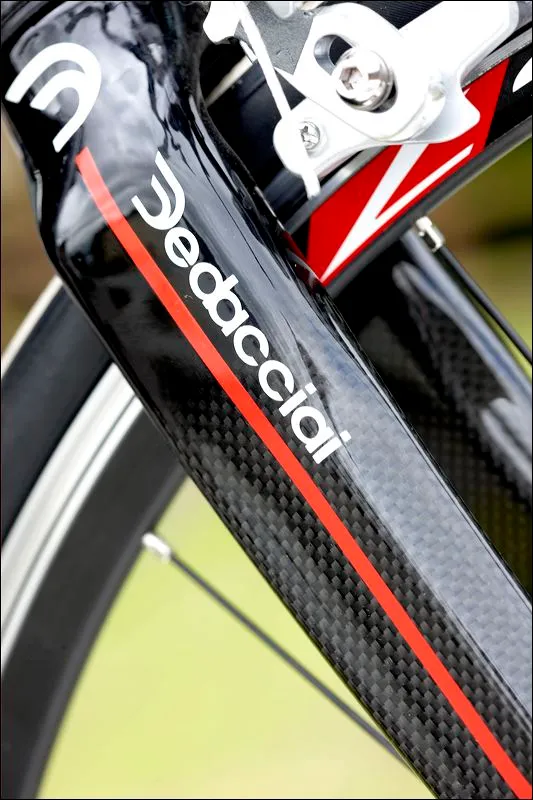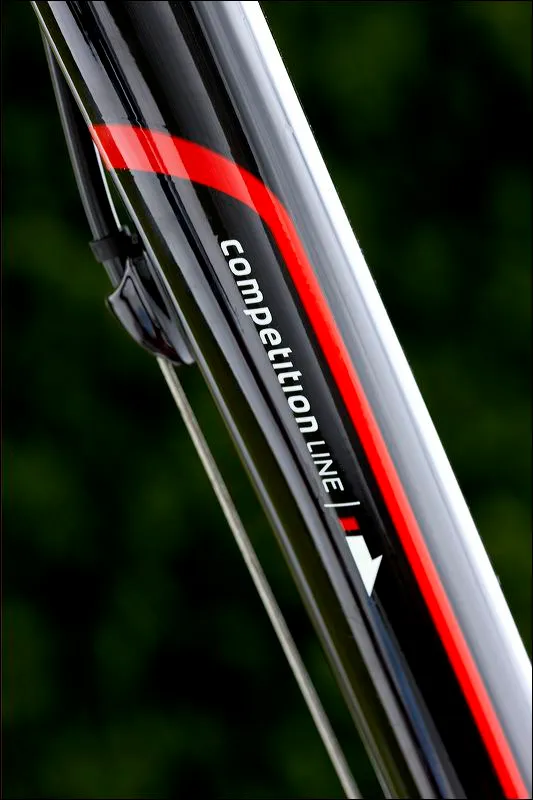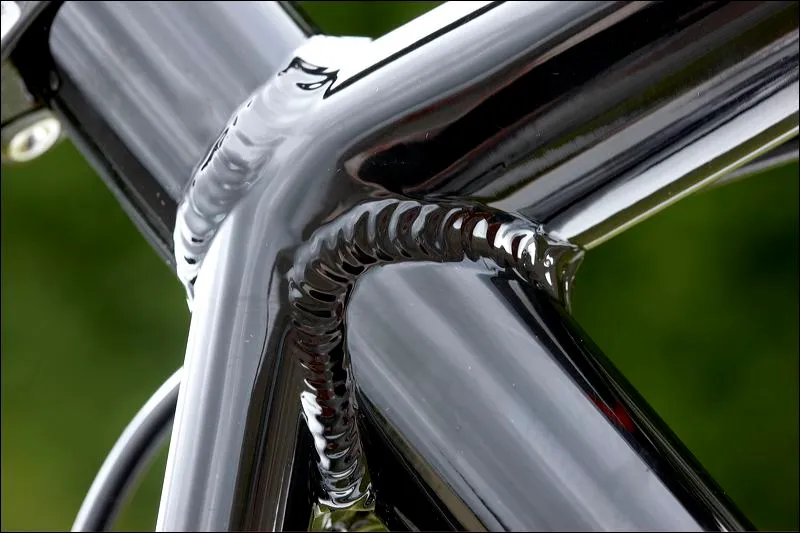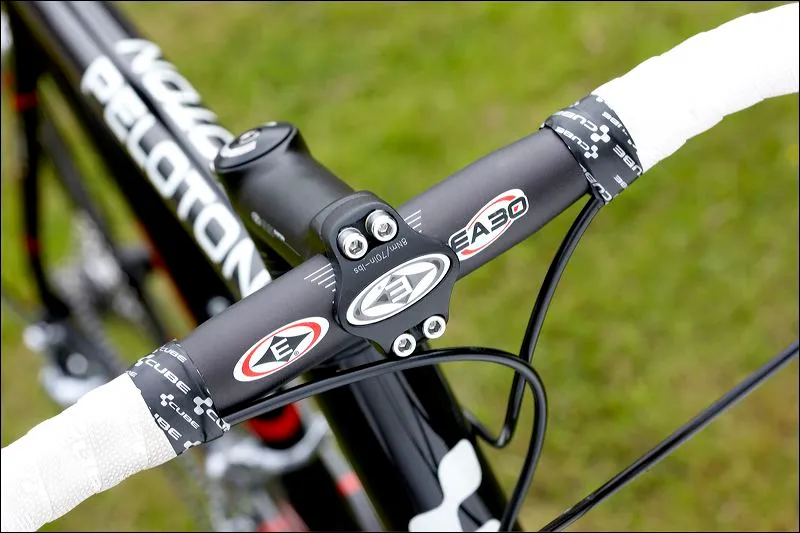Cube’s Peloton will appeal to riders who value excitement and light components over long-ride comfort. It doesn’t hurt that it looks like a bike that costs a couple of hundred quid more either.
Ride & handling: stiff & lively
The Cube Peloton’s stiff and lively bias suits racers better than those who are looking for an easy ride in a sportive.
Its taut handling and short wheelbase make the Peloton feel like it is more closely connected to the rider’s contact points than the others, and our experienced roadie testers liked this.
This tendency to transmit every single nuance of the road surface through to the rider can be a hindrance though. To make things a bit more comfortable on long rides we’d recommend swapping out the 31.6mm seatpost for a USE converter shim and a narrower, slightly more flexible 27.2mm seatpost.
Frame/Chassis: big, beefy & classy-looking
The Peloton’s beefy frame will suit heavy, tall riders in particular and those who prefer a traditional, level top-tube.
The Peloton shares the same frame as the Cube Aerial and while no bloater, its 1,675g frame is one of the heavier in this price range. There’s no carbon back end to drool over here, but the black, red and white livery plus choice wheels and kit make it look more expensive than other similarly-priced bikes.
The frame is made from 7005 aluminium, has a butted down-tube and top-tube, and it’s all welded to Cube’s usual high standards. An attractive Deda (short for Dedacciai) motif on the Black Blade carbon/aluminium fork gives the bike a cool factor as it is rare to see a branded fork on a bike costing less than a grand.
Cube has bucked the trend for compact and sloping frame geometry, preferring to remain true to a level top-tube. There are seven sizes right up to a huge 64cm, measured from the centre of the bottom bracket to the top of the seat-tube, and while there is no major cause for concern with the geometry, we selected a slightly longer than average stem for the 56cm version tested to compensate for a shorter than average (54.5cm) top-tube.
Equipment: weight-saving pick with triple versatility
The Peloton’s Ritchey finishing kit sets the standard for others to follow and the parts selection is lighter than on other similarly-priced bikes despite the triple chainset and 12-27 cassette.
The black anodised FSA Gossamer triple chainset co-ordinates well with the frame and the Ritchey Comp bars had our testers guessing the bike’s price tag a good few hundred pounds higher than it is.
The bar tape is soft and pliable to the touch in much the same way as a tennis racket handle, though it looks like it’ll be hard to keep clean.
The Scape Active Ergo 2 saddle is similar to a Fizik Arione and while it allows the rider to move around more than the others, it dips uncomfortably in the middle.
The Cube’s combined weight of gears and finishing kit is decently light and could be made even lighter with a compact double chainset and associated components. Unfortunately this is not a factory option.
Wheels: rare and great-looking Fulcrums, but not the lightest
The Fulcrum R7 wheels are the basement model from the Italian firm that was conceived by Campagnolo to compete with Shimano. As recently as 12 months ago we’ve seen them specced on bikes costing as much as £1249, but on bikes in this price range the the R7s are bettered by the lighter Shimano R500s and WH20 wheels.
The smooth-running cartridge bearing hubs are borrowed from the Campagnolo Mirage groupset and the graphics loosely resemble the hugely popular Mavic Ksyrium range.



















